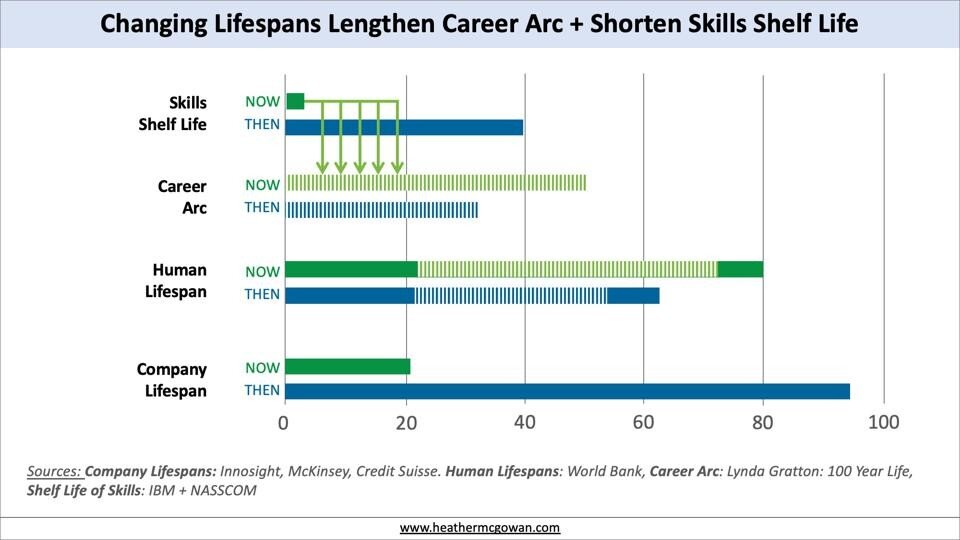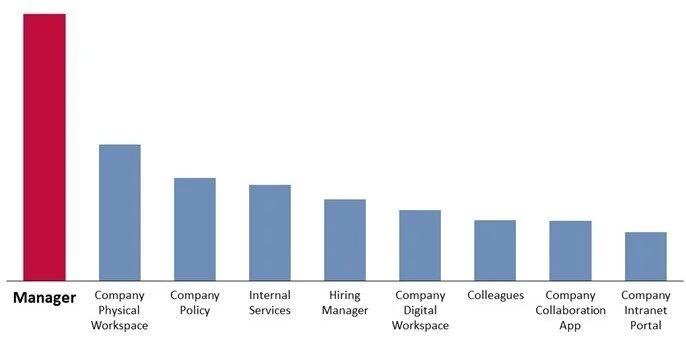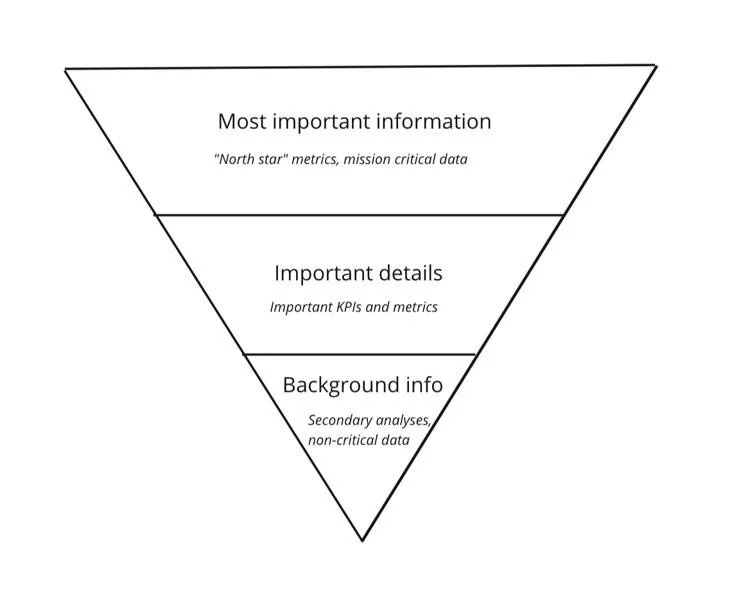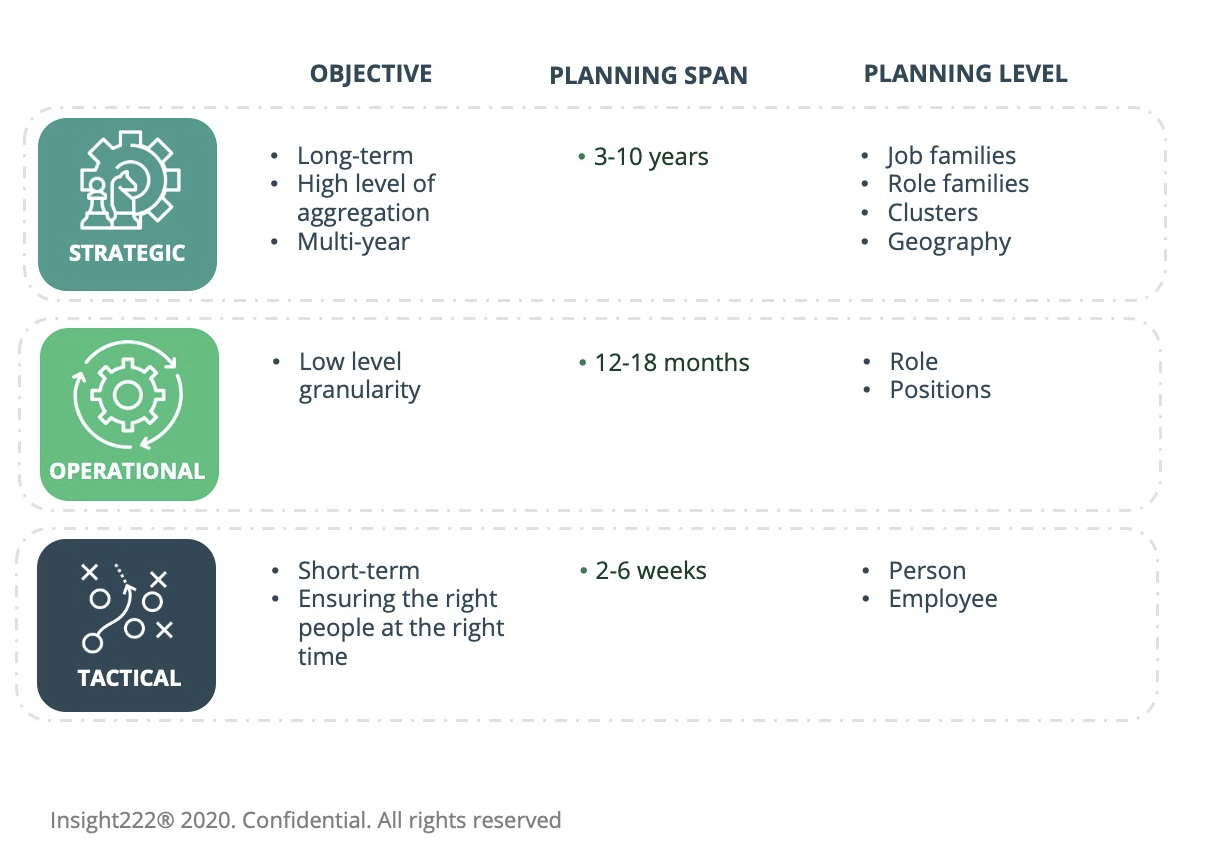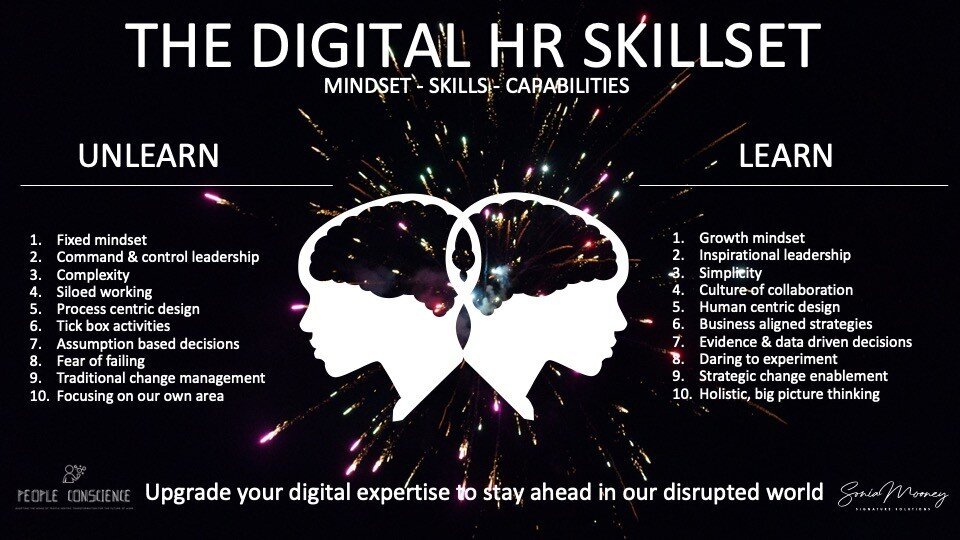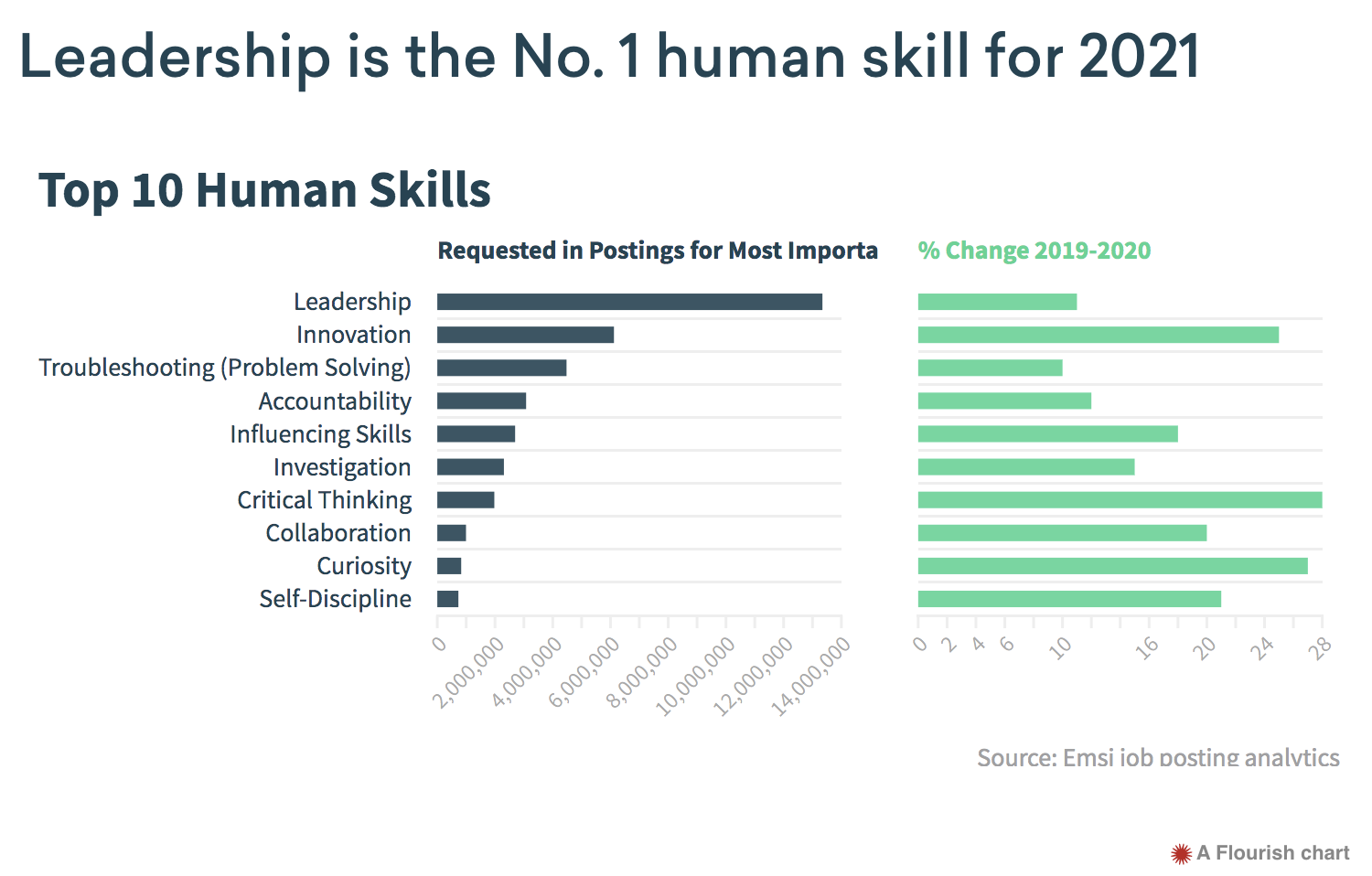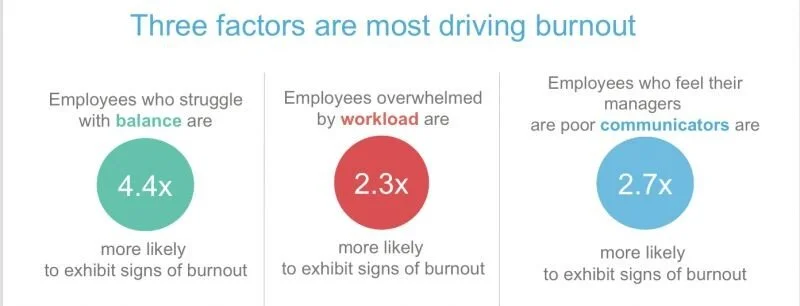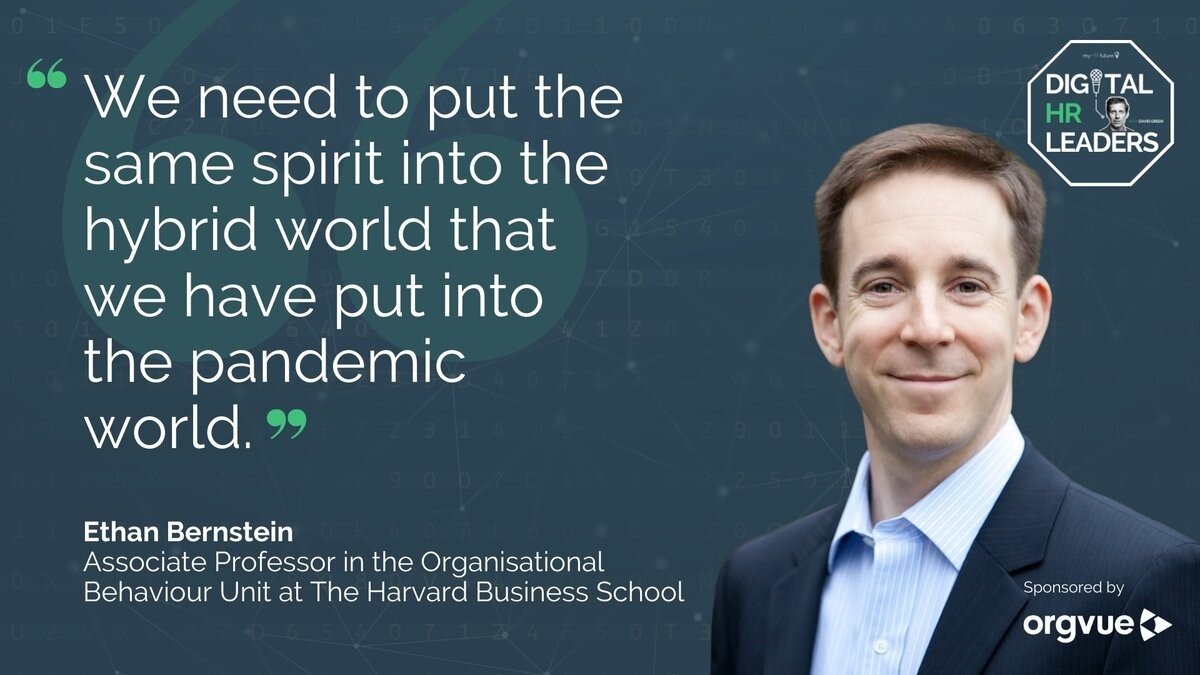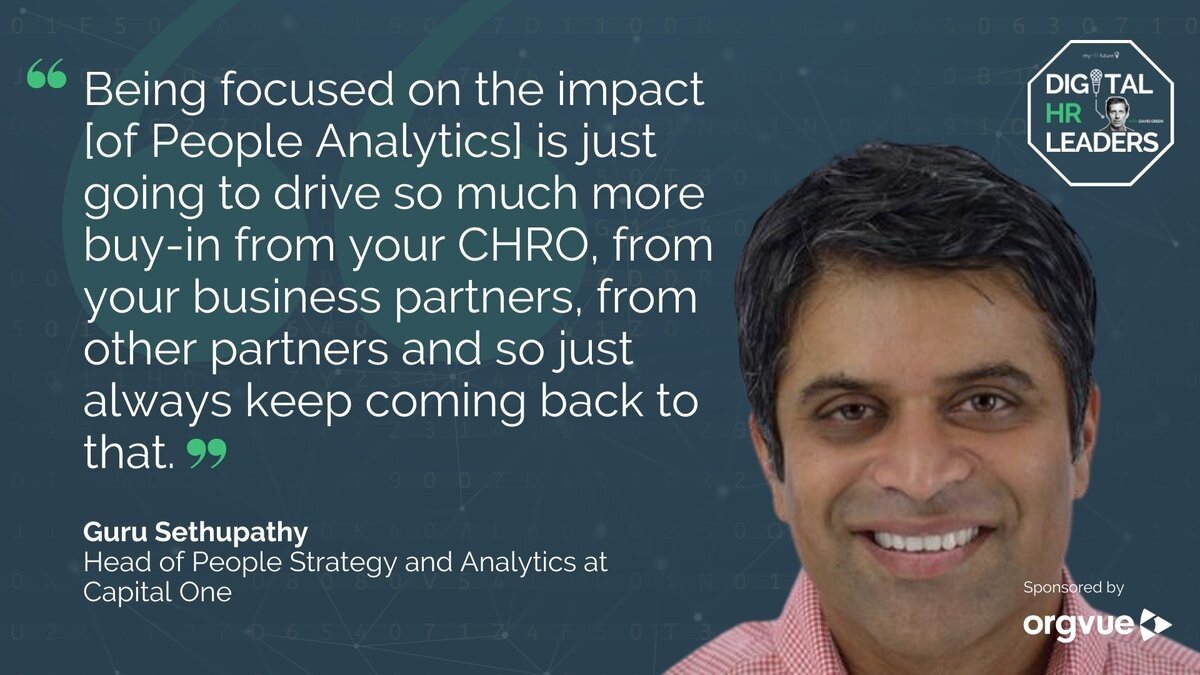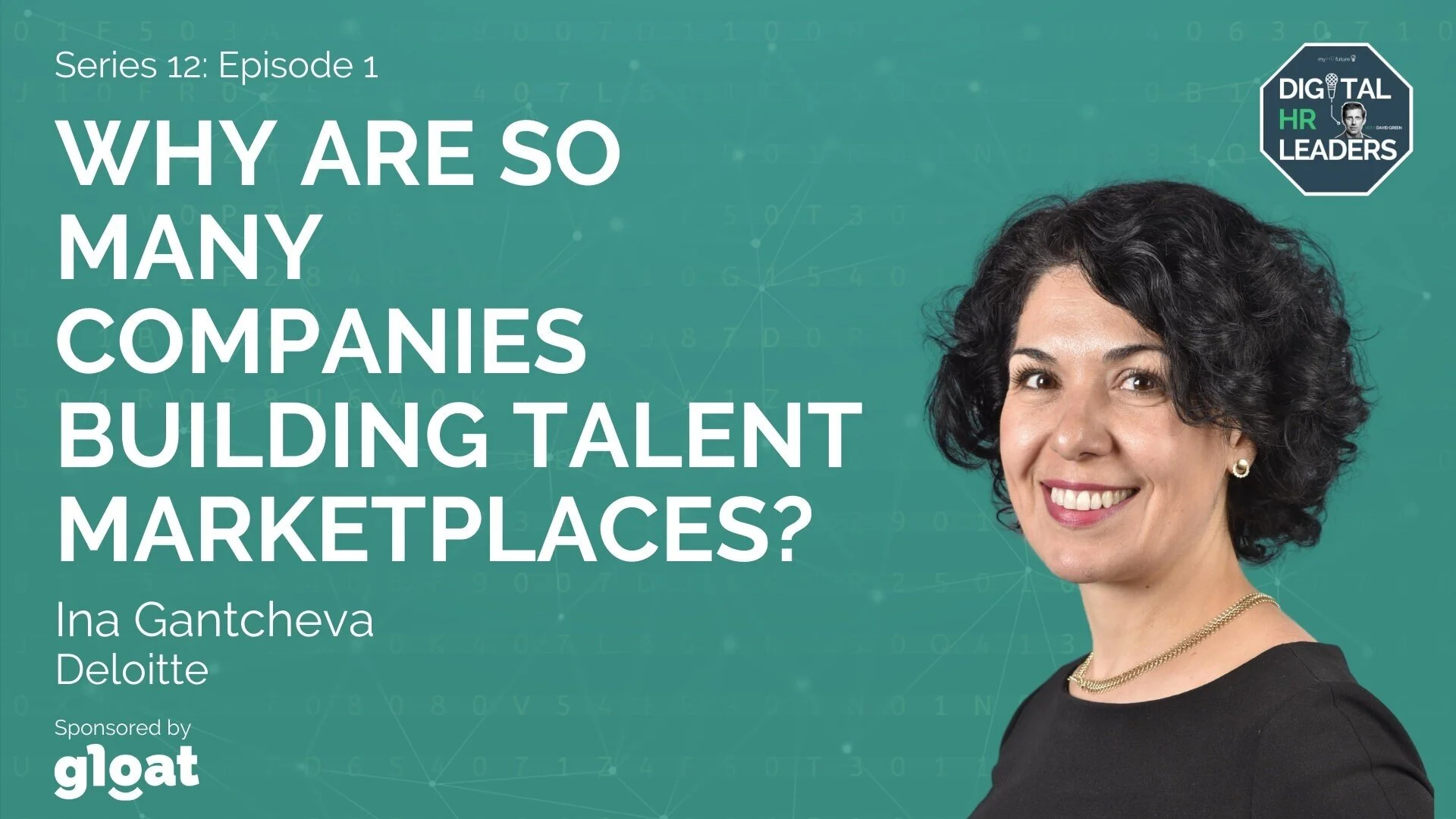The Best HR & People Analytics Articles of February 2021
One of the features of the pandemic for me is how it is exposing outdated thinking. Two examples of this from February immediately spring to mind. First, there was (now ex-) KPMG UK Chair, Bill Michael, telling staff to “stop moaning” about the pandemic and calling unconscious bias “crap”. Then there was Goldman Sachs boss David Solomon labelling remote working as an “aberration that we’re going to correct as soon as possible”.
Wow! Both are about as far as it’s possible to get away from empathetic and vulnerable leadership. Michael lost his job as a result of his crass remarks. The fact Solomon remains perhaps tells us something about the culture at Goldman Sachs.
Contrast this with Spotify and their new work from anywhere policy (as explained here by Anna Lundström and Alexander Westerdahl), which has rightly garnered a lot of positive responses since it was announced. Their belief that: “Effectiveness can’t be measured by the number of hours people spend in an office – instead, giving people the freedom to choose where they work will boost effectiveness” seems a much more sensible, sustainable and humanistic approach than that espoused by Solomon and his ilk
As the pace of vaccine roll out increases across the world, it is perhaps not surprising that there is an even greater emphasis on ways of working post-pandemic – it is the number one topic for our clients at Insight222. As such, the first five articles this month focus on this very theme. Look out in particular, for John Boudreau’s and Peter Ramstad’s excellent suggestion to couple future work design with agile experimentation as well as Dave Ulrich’s hope that personalisation is giving primacy.
Enjoy this month’s collection, and as ever – please share some data driven love with your network!
PS: I’ve had a few people asking when the Excellence in People Analytics book, Jonathan Ferrar and I have written will be published. I’m pleased to advise that the provisional publication date is July 3, 2021. More to follow on this.
THE FUTURE OF WORK POST-PANDEMIC
SUSAN LUND, ANU MADGAVKAR, JAMES MANYIKA, SVEN SMIT, KWEILIN ELLINGRUD, MARY MEANEY & OLIVIA ROBINSON – The Future of Work after COVID-19
An absolute treasure trove of trends, data and insights from an extensive study by the McKinsey Global Institute into the impact of the pandemic on the future of work. The study identifies three broad trends that may reshape work in the wake of the pandemic: i) Remote work and virtual meetings are likely to continue, albeit less intensely than at the pandemic’s peak (see FIG 1), ii) COVID-19 may propel faster adoption of automation and AI, especially in work arenas with high physical proximity, and iii) As many as 25 percent more workers may need to switch occupations than before the pandemic.
FIG 1: Workforce with remote work potential by number of days per week (Source: McKinsey Global Institute)
GERALD C. KANE, RICH NANDA, ANH PHILLIPS & JONATHAN COPULSKY - Redesigning the Post-Pandemic Workplace
Pretty much every people analytics team we work with at Insight222 is helping their company to plan the post-pandemic workplace. As this excellent MIT Sloan article suggests, this provides a once-in-a-generation opportunity to innovate and reenvisage the workplace. Armed with early data from Asia (via Ben Waber and Humanyze) that employees who returned to the office one or two days a week increased the number of serendipitous connections by about 25%, the authors provide three considerations for leaders as they contemplate how to return to the workplace. These are: i) enable flexibility in the use of office space, ii) continue to evolve virtual work, and iii) digitally support co-located work.
Returning to the office strategically, by focusing first on the activities best performed in person and, in the process, evaluating the effectiveness of both remote and co-located work, gives managers the ability to critically consider the ways in which a hybrid workplace might be more effective
JOHN W. BOUDREAU & PETER M. RAMSTAD - COVID’s Hidden Promise: Future Work Design Is Agile Innovation
Continuing the reinvention of work theme, John Boudreau and Peter Ramstad urge companies to take the lessons of agile innovation (e.g. experiment and fail fast) and apply them to future work design eschewing the one-size-fits-all return-to-the-workplace policies of the many. Instead Boudreau and Ramstad recommend a much more appealing policy: “We don’t know what the future of work will be. However, we DO know that you have all learned to innovate continually, as you have crafted your work to meet the unprecedented opportunities and challenges of the pandemic. So, instead of a policy applied to everyone, our ‘policy’ will be to equip you and your managers to design your work through agile experimentation.” The writers then go on to explain how HR can lead agile innovation in work design (“HR can become a hub for agile experimentation and learning applied to work design”).
HR can become a hub for agile experimentation and learning applied to work design
DAVE ULRICH - Personalisation as the Leadership and HR Takeaway from the 2020–2021 Crises
What is your primary takeaway from the crises of the last 12 (and counting) months? Dave Ulrich poses and then answers his own question in his latest bi-weekly LinkedIn article. Dave expresses his wish that personalisation is the key leadership and HR takeaway, and then proceeds to explain why. Firstly, because personalisation focuses on the person in terms of emotion, empathy, engagement, experience, and efficacy (“These e words tend to show up with increased attention on affinity in relationships and in organizations”). Secondly, because “personalization also refers to creating more personalized work responses through customized actions at both an employee and organization level.” As Dave explains at the organisation level, this means switching from benchmarking and best practice to a focus on guidance (i.e. focusing on what matters most to your own organisation), and highlights (in FIG 2) beta findings on what matters most across 37 human capital initiatives in over 1,000 organisations.
Personalization helps organizations know where to focus investments to deliver key outcomes
FIG 2: Beta results on the Organization Guidance System with One Thousand Organizations (Source: Dave Ulrich)
HEATHER E. MCGOWAN - Human Capital Era Reality: The Skills Gap May Never Close
A real gem of an article from Heather McGowan packed full of research, charts and thinking. In it, she posits that the ‘skills abyss’ will never close and that this might actually be a good thing. Current and future workforces will cycle through many occupations across longer careers and lifetimes. Keeping a tight grasp on a single occupational identity becomes the single highest hurdle to rapidly re-tool skills for an even more rapidly changing world. Ever the optimist, McGowan argues that we are entering the most exciting and liberating era of human work, an era that values all humans for their unique and creative contributions.
FIG 3: Impact of Changing Lifespans and Shelf Life of Skills (Source: Heather E. McGowan)
EMPLOYEE EXPERIENCE
VOLKER JACOBS - The Manager - An Underleveraged Opportunity to Have Meaningful Impact on Employee Experience
In his article, Volker Jacobs cites a number of insights amassed from data collected by TI People, which together highlight the pivotal role of the manager in the context of employee experience. First, interactions with the manager (see FIG 4) are by far the most impactful on the human experience at work. Second, managers with good experience create good experiences for their teams. Third, with a span of control typically ranging from 1:6 to 1:10, improving the experience for managers will have a multiplier effect on between six and ten employees. A powerful message backed up by some insightful data points.
FIG 4: Managers are the biggest influence on employee experience (Source: TI People)
PEOPLE ANALYTICS
ADAM McKINNON & SAMBIT DAS - Measuring Impact in HR: A Practical Demonstration
As most of us would testify, measuring impact in human resources can be challenging. In their highly practical article (including R code and visualisations – see example in FIG 5), Adam McKinnon and Sambit Das provide an example of how people analytics can be used to support an investment decision in HR (on different modes of training).
FIG 5: Difference in assessment results by training delivery format, example (Source: Adam D. McKinnon and Sambit Das)
MATTHEW HAMILTON - What The Walking Dead can teach us about implementing People Analytics
Analogous storytelling par excellence from Matthew Hamilton, Head of HR Strategy and Analytics at Protective Life. As the title suggests, Matthew explores why running a people analytics program is akin to running away from the type of zombie featured in The Walking Dead (one of my wife’s favourite shows!): “…sometimes you have to sprint; sometimes you can take a break; but you can never stop.” I recommend reading the whole article, but two things to draw out of Matthew’s excellent piece are his advice to i) build a community (“The lesson for us when building a people analytics program is to rally people to your cause.”) and ii) sometimes you have to leave people behind (“Don’t waste too much energy dragging laggards along. Your time is much better spent focusing on those who are adopting the mindset and processes than those who aren't.”) Great advice for escaping zombies and for achieving success with people analytics. If you like this article, you may also want to check out Matthew’s other recent article: How People Analytics is like making (good) blueberry muffins.
GREG NEWMAN - 11 killer questions to answer before you start in People Analytics
Not many combine people analytics and humour as well as Greg Newman – as his recent PAFOW presentation testifies. In the deck below, Greg compiles a list of eleven important questions for companies to consider “before any expensive software is bought, any cantankerous data scientists are hired, or any big promises are made to the Board.” Being Greg, he accompanies his countdown with a list of his eleven favourite countries (out of 86 he has visited). If you’re laughing, you’re probably learning, so I can highly recommend digging in.
FIG 6: Five tips when starting people analytics (Source: Greg Newman)
LIN TAYLOR - How to Make Dashboards Using a Product Thinking Approach
The premise of this article is that dashboards should be built using a product thinking approach so that they are impact-focused and provide a great user experience for their audience. It provides a checklist of when to build a dashboard (e.g. will the data be dynamically updated? Do you want exploration to be interactive?), and then provides guidance around ways to understand the problem and the audience, building the dashboard with your users in mind (see FIG 7), and following up and iterating on your work. Thanks to Andrew Marritt for highlighting this piece in his excellent Empirical HR newsletter.
FIG 7: An inverted pyramid demonstrating how you can think about the hierarchy of the information you present in a dashboard (Source: Lin Taylor, Shopify)
ORGANISATIONAL NETWORK ANALYSIS
ROB CROSS, HEIDI K. GARDNER & ALIA CROCKER - For an Agile Transformation, Choose the Right People
In our work at Insight222, we are seeing an increasing number of people analytics teams using organisational network analytics (ONA) to help tackle a wide range of business topics. One example is documented here by Babson’s Rob Cross and Alia Crocker and Harvard Law School’s Heidi K. Gardner. In their article, the authors highlight common reasons why agile initiatives fail (e.g. burnout, loss of talent and conflict between teams), and how by using ONA to identify ‘hidden stars’ (see FIG 8) and other highly connected resources, agile transformations can instead deliver on their promise and objectives.
FIG 8: Who makes the best team member? (Source: Rob Cross, Heidi K. Gardner and Alia Crocker)
LEADERSHIP & CULTURE
JOHN HAGEL III - Good Leadership Is About Asking Good Questions | DAMBISA MOYO - The Most Pressing People Questions Facing Companies Today
Being able to ask really good questions is an often-overlooked skill. But it is critical for leaders and for good people analytics too. John Hagel’s article outlines how by asking questions, leaders can help to solve thorny problems, connect with others and earn their trust. Questions like, “What new opportunities have emerged that we don’t want to miss? How might we use new technologies to change our business model?” should be asked of employees, stakeholders and even customers. Dambisa Moyo’s article looks at some of the most pressing people questions facing organisations such as: “How do you balance a human workforce with automation?” and “Are you pursuing a purpose that supports society?” Both articles are mandatory reading for people analytics professionals and HR business partners. You might also want to check out the myHRfuture course on Framing Business Questions and Developing Hypotheses (see clip below) to explore this skill further.
Leaders who ask powerful questions have the greatest success in both seizing new opportunities and addressing unexpected challenges — and they build cultures that will carry these benefits into the future
AARON DE SMET, KIM RUBENSTEIN, GUNNAR SCRAH, MIKE VIEROW & AMY EDMONDSON - Psychological safety and the critical role of leadership development
While the benefits of psychological safety are well established (witness Google’s Project Aristotle on team effectiveness and this episode of the Digital HR Leaders Podcast with Amy Edmondson as two examples), new research from McKinsey finds how by developing a specific set of skills, leaders can create a safer and high-performance work environment. The article provides three ways for organisations on where to start with psychological safety: i) Go beyond one-off training programs and deploy an at-scale system of leadership development, ii) Invest in leadership-development experiences that are emotional, sensory, and create aha moments, and; iii) Build mechanisms to make development a part of leaders’ day-to-day work.
Creating a “network of teams” requires a strong degree of psychological safety
FIG 9: Source: McKinsey
RANDY BEAN - Why Is It So Hard to Become a Data-Driven Company?
According to the findings of a survey of Fortune 1000 executives summarised in this article, 90% of companies report culture as their biggest barrier in becoming data-driven. This certainly tallies with what we see at Insigt222 when it comes to people analytics and the data-driven capabilities of HR professionals in many organisations. In response to this, the article recommends that leaders take three steps: i) focus data initiatives on clearly identified high-impact use cases, ii) reconsider how their organisations handle data, and iii) remember that this transformation is a long-term process that requires patience, fortitude, and focus.
Becoming data-driven takes time, focus, commitment, and persistence
WORKFORCE PLANNING
CAROLINE STYR - Taking a Data-Driven Approach to Workforce Planning
The speed of change continues to be relentless and the pace is quickening. That means a successful partnership between HR and the business is imperative. This is to ensure that the workforce – in terms of skills, capabilities and availability – and the work – in terms of how work gets done, for example remote vs. hybrid vs. onsite – are in line with shifting business objectives. In her article, Caroline Styr cites the biggest workforce planning challenge for HR is the difficulty in getting access to the right business stakeholders. She recommends a data-driven approach to overcome this, and then explains why organisation design and workforce planning are two sides of the same coin.
FIG 10: Three types of workforce planning (Source: Caroline Styr, myHRfuture)
PERFORMANCE MANAGEMENT
ALESSANDRO DI FIORE & MARCIO SOUZA - Are Peer Reviews the Future of Performance Evaluations?
One of the considerations for organisations when they decide to shift away from traditional methods of performance management is how they will use the data they collect for people analytics. This article argues that the pandemic and the rise of agile and self-managing teams provides the opportunity to create a socially-based feedback system designed to provide employees with a larger amount of feedback from peers and others. Thus feedback is democratised beyond the employee’s manager and a potentially rich source of data is created for people analytics.
Managers become “curators” of feedback data and personal development coaches of employees based not only on their assessment, but also on the “wisdom of the crowd”.
ETHICS
ANNA TAVIS - Key Lesson for HR from Apple/Facebook Standoff on Data Privacy
As Anna Tavis highlights, it may transpire that HR benefits from “lagging behind’ marketing when it comes to “experimenting” with people data. Certainly, there are many of us in the people analytics field that are watching with interest the increasingly bitter standoff between Apple and Facebook on their opposing philosophies towards users and their data. I agree with Anna that when it comes to people analytics, we will only achieve sustainability in the long term through empowering rather than exploiting employees. Read more from Dirk Petersen about six steps to ethically sound people analytics here.
Do we want to deploy the full power of analytics and technology to serve our employees, to have them thrive and deliver incredible results or do we want to pursue expedient outcomes and exploit employee data to serve the markets for the short term gains?
LEARNING
SONIA MOONEY & SOUMYASANTO SEN – The Digital HR Skillset
As Sonia Mooney and Soumyasanto Sen write in their article: “A digital strategy and mindset enables us to deliver efficiencies, excellent employee experiences and better business outcomes, becoming a strategic, value adding HR function.” This is not, of course, just about technology but having the right mindset, skills and capabilities. As such, this guide highlighting what to learn – and unlearn (see FIG 11) – should be a helpful guide to any HR professional looking to future proof their careers.
FIG 11: The Digital HR Skillset (Source: Sonia Mooney and Soumyasanto Sen)
HR TECH
TRACEY SMITH - Machine Learning in Human Resources
Tracey Smith provides a helpful, no-nonsense overview into how machine learning is being used in HR. She outlines the three types of machine learning you should understand: i) supervised learning (we know what we want to predict), unsupervised learning (we don’t know what we want to predict) and reinforcement learning (gaining knowledge for decision making). Finally, Tracey also summarises some of the main risks of machine learning.
Applying ML algorithms to decision making must be done with attention to the detail behind the algorithm and with visibility into the risks associated with ML usage
GARETH JONES - The power of Intent in unlocking high performance… | ROB SENTZ – Top Skills for 2021 | KOREEN PAGANO - Upskilling Your People: Getting Started with Skill Data
Three articles that caught my eye this month from the HR Tech vendor community. I’ve known Headstart CEO Gareth Jones for quite a few years. He is one of the most original and expansive thinkers in our field. Last year, Gareth decided to take Headstart fully ‘remote’ and in this article he explains the power of intent in unlocking high performance. Next Rob Sentz (Emsi) outlines the top skills for 2021, based on the skills requested or required in hundreds of thousands of job postings during 2019-2020, into three categories: i) human skills (see FIG 12), ii) technical skills and iii) hybrid skills. Finally, Koreen Pagano (Degreed) talks through the four types of skill data you can draw on to develop a robust skills taxonomy, as well as the four key stages of developing a skills data strategy.
FIG 12: Leadership is the No. 1 human skill for 2021 (Source: Emsi job posting analysis)
PODCASTS OF THE MONTH
McKINSEY TALKS TALENT – The Vanishing Middle Manager | THE RECRUITING BRAINFOOD PODCAST – People Analytics…or Bossware? | REDEFINING HR – A look at Zoom’s People Team
Three great podcasts for your aural listening this month. First, Bryan Hancock, Bill Schaninger and Lucia Rahilly discuss the vital role played by many middle managers and what could be lost as companies race to embrace ‘flatter, faster and leaner’ structures. Next, Andrew Marritt and Littal Shemer Haim join Hung Lee and Adam Gordon in a special episode of the Brainfood podcast on the pros, cons and intricacies of workplace surveillance. Finally, Zoom’s Chief People Officer Lynne Oldham joins Lars Schmidt to discuss how Zoom successfully navigated the organisation and workforce through its phenomenal growth in 2020.
VIDEO OF THE MONTH
KEITH McNULTY – Handbook of regression modelling
The New York Strategic HR Analytics Meetup group was set up several years ago by Jeremy Shapiro and Stela Lupushor and has inspired a host of similar groups to spring up around the world. One happy consequence of the pandemic is that you don’t have to live in New York now to tune in to their regular meet-ups. That proved particularly helpful a few weeks ago when Keith McNulty discussed his new open source ‘Handbook of Regression Modelling in People Analytics’. Tune in now – I can promise you won’t be disappointed. You may also want to reserve your spot at the next New York Strategic HR Analytics virtual meet-up on 16 March on Understanding the Human Capital Management Disclosure Requirements.
RESEARCH REPORT OF THE MONTH
ADRIANO KOSHIYAMA, EMRE KAZIM, PHILIP TRELEAVEN, PETE RAI, LUKASZ SZPRUCH, GILES PAVEY, GHAZI AHAMAT, FRANZISKA LEUTNER, RANDY GOEBEL, ANDREW KNIGHT, JANET ADAMS, CHRISTINA HITROVA, JEREMY BARNETT, PARASHKEV NACHEV, DAVID BARBER, TOMAS CHAMORRO-PREMUZIC, KONSTANTIN KLEMMER, MIRO GREGOROVIC, SHAKEEL KHAN AND ELIZABETH LOMAS - Towards Algorithm Auditing: A Survey on Managing Legal, Ethical and Technological Risks of AI, ML and Associated Algorithms
Soon there will be billions of algorithms making decisions with minimal human intervention, from autonomous vehicles and finance, to medical treatment, employment, and legal decisions. This paper investigates the nature and scope of auditing and assurance relating to the ethical deployment of new technology and presents a framework to inform those interested in systems of governance and compliance to regulation/standards.
TRAINING COURSE OF THE MONTH
KERRY HART – Storytelling with Data
In the new course in the myHRfuture Academy, Kerry Hart helps you build the skills needed to take your analysis and insights and turn them into compelling stories that will ensure your stakeholders act on your recommendations. Kerry shares a four-step framework to help you bring storytelling to life to drive real change and action. By the end of this course, you will have learned: i) What is storytelling? Ii) What is the narrative arc and how it can be applied to the stories you’re crafting? iii) Why is storytelling essential for communicating data? and; iv) Four storytelling techniques to help you bring your data to life.
BOOK OF THE MONTH
ADAM GIBSON – Agile Workforce Planning: How to Align People with Organizational Strategy for Improved Performance
Having just submitted the manuscript for a book, I have a new-found respect for anyone who manages to author a book. This month I’ve been reading Adam Gibson’s new book on workforce planning. As many of you will know, Adam is a global leader in the field and leads the Strategic Workforce Planning Faculty at the CIPD. The book lives up to its billing as a practical guide for HR and organisation development practitioners needing to align their staff, skills and resources with evolving company goals.
FROM MY DESK
I was fortunate to be featured in a couple of articles by Gloat and Glint, whilst three new episodes of the Digital HR Leaders Podcast were released in February…
ADAM ETZION - The SEC’s New Human Capital Regulations: a talk with David Green
I caught up with Gloat’s Adam Etzion to discuss the growing trend requiring organisations to disclose more information about human capital, and why this is an opportunity for forward-thinking CHROs and people analytics teams. As highlighted earlier, if you are interested in this topic, you might want to join the next meeting of the New York Strategic HR Analytics Meetup on Understanding the Human Capital Management Disclosure Requirements. Reserve a spot here.
ANNE McSILVER - 3 Ways People Analytics and Employee Engagement are Transforming HR
Anne McSilver from Glint does a great write-up of a webinar Ritu Mohanka and I recently did for HR Zone on “How People Analytics Can Help HR Navigate Through the Changing World of Work.” One of the insights shared by Ritu was Glint data (see FIG 13) highlighting that employee burnout has risen as the pandemic has persisted, and how it is having different effects on women and men.
FIG 13: Three factors affecting burnout (Source: Glint)
ETHAN BERNSTEIN - How Can HR Help Organisations Prepare for Hybrid Working?
Harvard Professor Ethan Bernstein joins me to dig into the research he has been conducting with others, including Ben Waber, throughout the pandemic, premised on answering the question: What impact has working from home had on productivity and creativity?
GURU SETHUPATHY - How Capital One delivers value at scale with People Analytics
Over the last four years, Guru Sethupathy has quadrupled the size of the team at Capital One to around 100 people, as it has evolved into one of the leading people analytics functions on the planet. Guru and I discuss the secrets behind scaling people analytics, the work the team is doing around hiring, internal mobility and fairness, how to create a data-driven HR function and ponder how to drive behavioural change from people analytics.
INA GANTCHEVA - Why Are So Many Companies Building Talent Marketplaces?
Deloitte’s Ina Gantcheva joins me to help break down the numerous benefits talent marketplaces provide to companies and employees, discuss examples of talent marketplace in practice, the critical role of HR, how to measure success and the important role talent marketplace is playing during and beyond the pandemic.
LEARN MORE ON SCALING PEOPLE ANALYTICS
The insights Guru Sethupathy provides on how to scale people analytics in an organisation, such as bringing data, reporting, consulting and strategy together, partnering with stakeholders in the business to identify the most important work, and productising solutions tallies with our experience at Insight222. In research we published in 2020, we recommend setting the operating model for people analytics to flow along a value chain. The people analytics value chain is led by client drivers as inputs and ends with analytics products delivering business outcomes at scale. You can download and read the report here: Delivering Value at Scale: A New Operating Model for People Analytics.
CATCH UP ON THE DIGITAL HR LEADERS PODCAST
If you haven't listened to all of the episodes of the Digital HR Leaders Podcast, you can catch up now by clicking on the links below.
EP 56: Ina Gantcheva - Why Are So Many Companies Building Talent Marketplaces?
EP 55: Guru Sethupathy - How Capital One delivers value at scale with People Analytics
EP 54: Ethan Bernstein - How Can HR Help Organisations Prepare for Hybrid Working?
EP 53: Wagner Denuzzo - How HR enables business transformation at Prudential Financial
EP 52: Wenshan Xu - How Singapore uses skills data to support lifelong learning
EP 51: Dave Ulrich, Brigette McInnis-Day and Rupert Morrison - The Future of HR: How can HR can be more value and business focused?
BONUS EPISODE: David Green & Ian Bailie - 'All Eyes on HR' - HR Predictions for 2021
EP 50: Renil Kumar - How Wipro uses People Analytics to enable hyper-personalisation
EP 49: Michael Arena - How ONA can help understand the impact of virtual and hybrid working on innovation and wellbeing
EP 48: Daniel West - How to Democratise People Analytics to Drive Agile Decision Making
EP 47: Melissa Harper - How Bayer is redefining the workplace around Purpose, Innovation & Culture
EP 46: Chin Yin Ong - How people data can drive better business and employee outcomes
EP 45: Vidya Krishnan - Making learning a habit that matters at Ericsson
EP 44: Simon Brown - How Novartis promotes learning curiosity to drive business value
EP 43: Kat Kennedy - Improving Employee Experience through Learning, Skill Development & Mobility
EP 42: Gianpiero Petriglieri - How Do You Create a Learning Culture in the Workplace?
EP 41: Lynda Gratton - How can HR help shape the re-skilling and learning agenda?
Bonus Episode: Diane Gherson - How IBM is Reinventing HR with AI and People Analytics
Summer Special #5: Sophie Rwegera Khadhraoui - Building a People Analytics Function in a Humanitarian Organisation
Summer Special #4: Dan Cable - How to help people love what they do at work
Summer Special #3: Torin Ellis - What is HR's Role in Creating Diverse and Inclusive Organisations?
Summer Special #2: Tomas Chamorro-Premuzic - What is the role of leadership in times of crisis?
Summer Special #1: Amy Edmondson - How to create Psychological Safety at work
EP 40: David Green - How can People Analytics drive business value?
EP 39: Jeremy Shapiro - How People Analytics has progressed in the last ten years
EP 38: Heather McGowan - How Covid-19 is accelerating the Future of Work
EP 37: Thomas Rasmussen - How National Australia Bank has scaled People Analytics
EP 36: Ravin Jesuthasan - Six imperatives for HR in the Future of Work
BONUS EPISODE: Amit Mohindra & Dawn Klinghoffer - What is the future of People Analytics?
EP 35: Peter Hinssen - What is the role of HR in driving and enabling innovation?
EP 34: Bruce Daisley - What do business leaders want from HR?
EP 33: Dirk Jonker - Why People Analytics needs to behave like a start-up
EP 32: Cole Nussbaumer Knaflic - The role of storytelling in People Analytics and Data Visualisation
EP 31: Piyush Mathur - How Johnson & Johnson uses People Analytics to drive business outcomes
BONUS EPISODE - Heather Whiteman, RJ Milnor & Ian Bailie (Live at PAFOW) - How to develop the HR skills of the future
EP 30: Katy Gray - How Arup uses reward data to drive behavioural change
EP 29: Uri Ort - What is the future of talent assessment?
EP 28: Zara Nanu - The role of People Analytics in Gender Pay Analysis
EP 27: Julia Shaw - How can technology reduce bias in the workplace
EP 26: Stela Lupushor - How HR can be a Catalyst for Change
BONUS EPISODE: Volker Jacobs - How to scale Employee Experience
EP 25: Julie Digby - How HR Drives Transformation and Org Design at Mars
EP 24: RJ Milnor - How McKesson uses ONA to identify what drives high performance in sales
EP 23: Rupert Morrison - Rethinking Workforce Planning & Organisation Design
EP 22: Dawn Klinghoffer - The Evolution of People Analytics at Microsoft
EP 21: John Boudreau - Reinventing Jobs: The Future of Work and it's impact on HR
EP 20: Tanuj Kapilashrami - How Standard Chartered designed an exceptional Employee Experience
EP 19: Anna Tavis: What is Agile HR and how are companies adopting it?
EP 18: Sarah Johnson: How to use employee surveys to create strategic value
EP 17: Leena Nair - How HR drives business value at Unilever
EP 16: Keith McNulty - HR 3.0: more data driven, more agile and more business focused
EP 15: Jason Corsello - The Shift From HR Tech to Work Tech
EP 14: Jill Larsen - How does the CHRO successfully partner with the CEO
EP 13: Frida Polli - How AI and Behavioural Science can reduce bias in recruiting
EP 12: Ian O'Keefe - The Workforce Analytics journey at JP Morgan Chase
EP 11: Dave Ulrich - The role of HR in the Digital Age
EP 10: Jordan Pettman - How Nestlé uses People Analytics to measure Gender Pay Gap and Equity
EP 9: Catalina Schveninger - The Evolution of Corporate Learning at Vodafone
EP 8: Richard Collins - How is Automation, AI and Analytics changing recruiting?
EP 7: Katarina Berg - Spotify's CHRO on Leading HR in a digital world
EP 6: Nick Holley - How HR can become more business relevant
EP 5: Eden Britt - How to build a People Analytics team in a global organisation | The People Analytics journey at HSBC
EP 4: Yvette Cameron - How Blockchain will disrupt the Future of Work and HR Technology
EP 3: Didier Elzinga - How to Create a Culture First Company
EP 2: Edward Houghton - The Head of Research at the CIPD on Driving Business Performance with People Data
EP 1: Sharon Doherty - How to transform HR to be more digital and building a culture of diversity
ABOUT THE AUTHOR
David is a globally respected writer, speaker, conference chair, and executive consultant on people analytics, data-driven HR and the future of work. As an Executive Director at Insight222, he helps global organisations create more cultural and economic value through the wise and ethical use of people data and analytics. Prior to joining Insight222 and taking up a board advisor role at TrustSphere, David was the Global Director of People Analytics Solutions at IBM Watson Talent. As such, David has extensive experience in helping organisations embark upon and accelerate their people analytics journeys. David also hosts the Digital HR Leaders Podcast on myHRfuture.
SEE ME SPEAK AT THESE EVENTS
I’ll be chairing and/or speaking about how to drive business value and employee experience through people analytics as well as the Nine Dimensions for Excellence in People Analytics model at the following upcoming events:
5 March - HR Core Lab: People Analytics
19-22 April - People Analytics World




